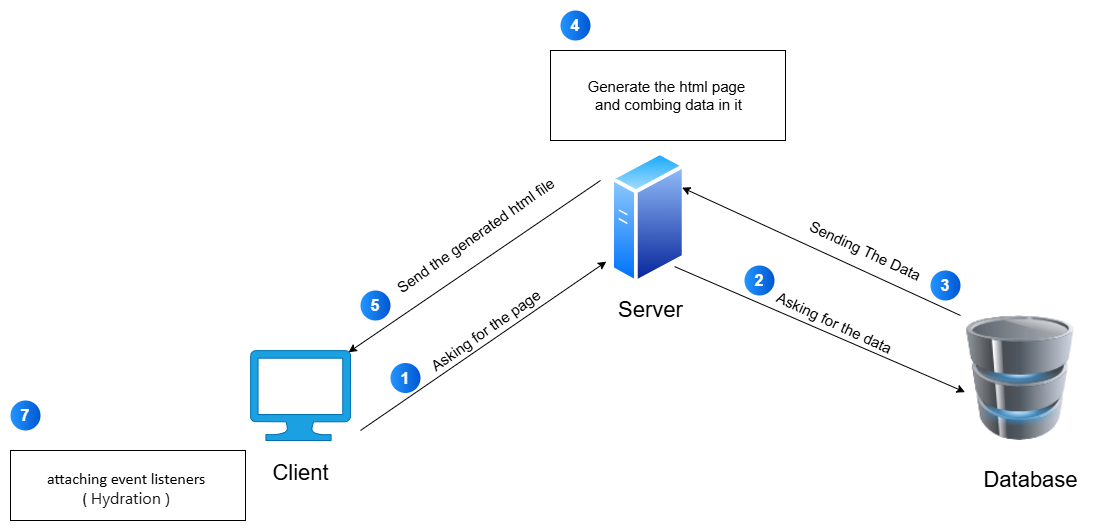How SSR (Server-Side Rendering) Works
Learn how Server-Side Rendering (SSR) works to improve SEO, initial load time, and user experience in dynamic web applications using frameworks like Next.js
What is Server-Side Rendering
Server-Side Rendering (SSR) is a technique used in web development where the server generates the complete HTML content of a webpage and sends it to the client (browser). This approach differs from Client-Side Rendering (CSR), where the server sends a minimal HTML file with JavaScript references, and the browser is responsible for rendering the page. SSR ensures that the client receives a fully-rendered page with data, JavaScript, and CSS files immediately after the request, eliminating the need for users to wait on a blank screen. This makes SSR ideal for improving performance and Search Engine Optimization (SEO).
How SSR Works :

First thing is when a user visits a website, the browser sends an HTTP GET request to the server asking for webpage
then the web server (for example, Nginx, Apache) receives the request and determines the resources needed to process it. If the server needs to make internal or external API calls to fetch data, it do it at this stage.
Once the API calls are complete and the data is retrieved, the server generates the HTML page by combining the data with the page template.
And when the server complete its works it sends the fully-rendered HTML page to the client.
And the browser displays the page immediately, ensuring a fast initial load.
So after this step the page now is static so the user can’t interact with the page for example clicking on a button , here the hydration work is came to make the page a live by attaching event listeners and enabling interactivity.
Example of SSR in nextjs
interface Itodo {
id: number;
title: string;
completed: boolean;
}
const fetchTodo = async (): Promise<Itodo> => {
const resp = await fetch("https://jsonplaceholder.typicode.com/todos/1");
if (!resp.ok) {
throw new Error("Failed to fetch data");
}
return resp.json();
};
const TodoPage = async () => {
const todo = await fetchTodo();
return (
<div>
<h1>{todo.title}</h1>
<p>{todo.completed ? "Completed" : "Not Completed"}</p>
</div>
);
};
export default TodoPage;
in this case the server will fetch the data from the api and then comping it in the html template
so the returned html file will looks like this
<!DOCTYPE html>
<html>
<head>
<title>Todos App</title>
</head>
<body>
<div>
<h1>delectus aut autem</h1>
<p>Not Completed</p>
</div>
</body>
</html>
Pros & Cons of Server-Side Rendering
Pros :
- Search engines can easily index the content since it’s part of the initial HTML
- users see the content immediately so it's improving the perceived performance
- Pages can be preloaded with data, making SSR suitable for both static and dynamic content
Cons :
- Each request requires server-side processing, which can strain server resources
- If data changes frequently, CSR might be more efficient
- Unlike CSR, navigating between pages may require a full page reload
SSR vs CSR: Key Differences
| Feature | Server-Side Rendering | Client-Side Rendering |
|---|---|---|
| Initial Load Time | Faster (pre-rendered HTML) | Slower (data fetched in browser) |
| SEO | Excellent (content visible in HTML) | Poorer (JavaScript needed to load content) |
| Performance | Better for first load | Better for fast user interactions |
| API Calls | Happens on the server before sending HTML | Happens in the browser after loading the page |
| Best Use Cases | Blogs, e-commerce pages, dashboards | Web apps, SPAs (Single Page Apps) |